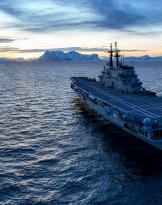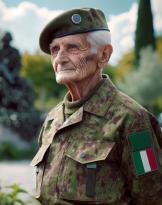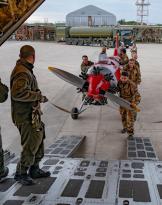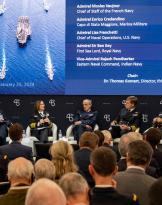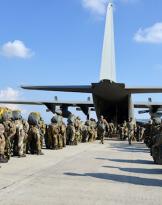One of the most urgent programs for the renewal of the equipment supplied to the Italian Army is that relating to the replacement of the Bersaglieri combat vehicle Dart (opening photo). Acquired in 2002, it was designed and built by the national industry after a very long phase of development that began in the XNUMXs (project VCC-80). Equipped with a turret armed with a 25 mm automatic cannon and mobile performance that approached that of the tank Ram, at the time of its entry online on Dart was a medium performance vehicle, comparable to the Russian BMP-2 and which also held its own against NATO IFVs such as the AMX-10, the Warrior and the first version of the Bradley M-2, despite suffering from the lack of an anti-tank missile ramp.
In the course of his service the Dart is not it has never been subjected to improvement interventions and today appears lacking especially in terms of protection, given by an armored aluminum shell with overlapping 6 mm thick steel plates.
After some unsuccessful improvement projects (new drumless turret armed with a 30 mm machine gun and additional external armor) and extension of production to specialized versions, finally proposed in the XNUMXs, the manufacturer had recently advised against the development of a version modernized.
The war in Ukraine has changed prospects and now the Army has decided to carry out some performance enhancement interventions. However, the fact remains that the Dart is affected by the seniority of planning and the Armed Force is thinking of a replacement.
 Various options are being studied, such as the already mentioned one of adopting the German crawler Lynx (following photo) or an updated version of the 8x8 armored car Arrow.
Various options are being studied, such as the already mentioned one of adopting the German crawler Lynx (following photo) or an updated version of the 8x8 armored car Arrow.
The choice to be made is first of all that between a tracked vehicle or a wheeled one, following, in the latter case, the example of the French army that has decided to support the tank Leclerc the 8-wheeled VBCI, weighing 29 t and armed with a 25 mm machine gun in the turret. The British who have decided to abandon the modernization of the Warrior in favor of Boxer.
In the world panorama of armored vehicles, schools of thought regarding infantry combat vehicles differ considerably from country to country: in fact, we move from super-heavy IFVs, derived from the hulls of tanks such as the Namer, heavy 63 t, produced in Israel on the mechanics of the Merkava tank and the Russian T-15, equipped with the hull of the T-14 Armata tank, with a 30 or 57 mm machine gun with 4 counter-tank missile launchers and weighing 48 t, Tracked medium-sized IFV like the Swedish CV-90 (next photo) and the Germans Puma e Lynx, recently adopted by Hungary, which use dedicated hulls, weighing less than that of MBTs, for the IFV versions taken from 8x8 wheeled troop transport vehicles, such as the Boxer German armed with a 30 mm machine gun, the French VBCI, the Homeland AMV, etc.
The writer has many doubts about the ability of a rotated vehicle, albeit 8x8, to be able to ensure cooperation in difficult terrain with a tank and a level of protection sufficient to operate in ballistic contact with an opponent equipped with modern anti-tank weapons.
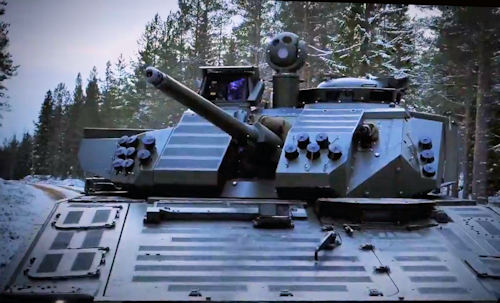 An IFV intended to operate in close contact with armored formations must have mobility similar to that of tanks, high caliber machine guns (30 mm and more), long-range counter-tank missile launchers or loitering munition launchers, all weapons capable of integrating the main armament of the tanks, in addition to a passive armor that comes as close as possible to that of an MBT, as well as of course anti-missile and anti-drone active protection systems, identical to those mounted on the tanks. The installation on board of an IFV of such a variety of armaments and self-protection systems and above all the assembly of armored plates of considerable weight and thickness cannot be obtained with rotated traction vehicles, under penalty of excessive decay of mobility performance.
An IFV intended to operate in close contact with armored formations must have mobility similar to that of tanks, high caliber machine guns (30 mm and more), long-range counter-tank missile launchers or loitering munition launchers, all weapons capable of integrating the main armament of the tanks, in addition to a passive armor that comes as close as possible to that of an MBT, as well as of course anti-missile and anti-drone active protection systems, identical to those mounted on the tanks. The installation on board of an IFV of such a variety of armaments and self-protection systems and above all the assembly of armored plates of considerable weight and thickness cannot be obtained with rotated traction vehicles, under penalty of excessive decay of mobility performance.
The emphasis placed on the requirement for IFVs to survive close to that of a wagon rests on the following considerations:
1) compared to the Cold War era, when there was the need to acquire a large number of IFVs to equip all mechanized infantry units framed in large armored units, today this number has significantly reduced and a few hundred IFVs would be enough to satisfy the needs of armies such as the Italian, British or French armies that field no more than 200-300 tanks.
2) The modern criteria for the use of armored units in the open field, characterized by high dynamism, tight times of action to escape the opponent's shooting and shooting on the move, place a lower need for the Bersaglieri to walk away.
3) In fighting in inhabited centers, an increasingly present event in current battlefields, the performance of the most protected and armored and above all tracked armored vehicles excel, more suitable than wheeled vehicles to overcome barricades, obstacles and masses of rubble or to demolish walls .
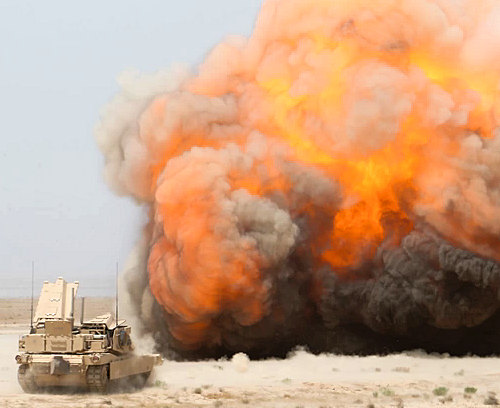 Finally, it is not clear why an IFV should have considerably less protection than a wagon, when the first carries at least three times the number of men than the second.
Finally, it is not clear why an IFV should have considerably less protection than a wagon, when the first carries at least three times the number of men than the second.
The main task of an armored vehicle today is to guarantee the survival of its crew. The vulnerable and offensive task is certainly important, but secondary to the ability to take blows without harm to the occupants, especially in Western armies which have a marked sensitivity towards loss of human life.
Why should the tankers have much greater protection than the Bersaglieri, at least until the latter go ashore? In war, the tanks most appreciated by the crews have always been those that were best able to resist the opposing offenses. See, for example, the Matilda and Centurion British, the Soviet T-34/76 and KV-1, the Tiger and Panther Germans, the Merkava Israeli.
In war operations, the unprotected tanks have always been viewed with suspicion and apprehension by their crews. The same and even more so for troop transport vehicles, as evidenced by the hundreds of carcasses of BMP, BTR, MTLB, BMD, etc. scattered across the Ukrainian battlefields.
After these considerations, there should be no doubts at least on the choice of traction of the new IFV for the Bersaglieri, which, in our humble opinion, can only be the tracked one.
The numerous types of 8x8 in service in the world, the armored vehicles for infantry that are the most popular in recent years, only adapt to certain scenarios, such as those at medium / low intensity, or in particular operational contexts such as desert terrain o the great plains of central Europe, where they are able to enhance their mobility characteristics on prepared roads or tracks and make the most of their superior travel capacity on consistent terrain compared to tracked vehicles.
The 8x8, with their lateral protection normally limited to the firing of 12,7-14,5 mm caliber automatic weapons, lack passive protection, are too evident with excessively developed shapes in height (equal to or often greater than those of the M wagon. -60A1) and have problems hosting missile / rocket active protection systems on board. The only 8x8 IFV to be equipped to date seems to be theeitan Israeli.
FC
Photo: Italian Army / Rheinmetall / BAE Systems / US Marine Corps


